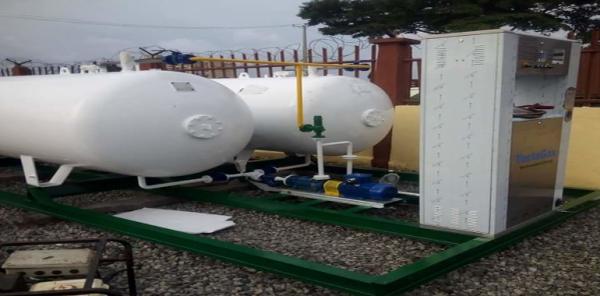
The liquefied petroleum gas (LPG) commonly known as cooking gas is a flammable mixture of hydrocarbon gases used as fuel in heating appliances, cooking equipment, and vehicles. The role of LPG has been largely positive over the last two decades. LPG has contributed to reduce carbon emissions and provided reliable support and back-up for renewable energy. Nigeria is the largest economy in sub-Saharan Africa endowed with large oil, gas, hydro and solar resource. As demand for local consumption of cooking gas intensifies, people in the country can take advantage of the low prices to increase cooking gas consumption. Cooking gas is used for cooking in many countries including Nigeria for economic reasons, for environmental safety, convenience or because it is the preferred fuel source. It is therefore worthy of note to set up gas plant that will meet the growing demand of cooing gas in Nigeria. The timeline for setting up LPG plants differs; it typically takes about 24 months or more depending on the approval process from the Department of Petroleum Resources (DPR). Prior the approval, the perspective gas plant owner must have a plan on how to get the most effective gas plant materials for efficient flow of the fluid from the LPG tank gas cylinders.
Purchasing most effective gas plant materials that are efficient, durable, cost and time saving equipment needs the guidance and directives of an expert in the field of gas plant. Kiakiagas is an established gas company ready to guide and put you through on the choice of gas plant materials that are everlasting and of high quality. We embark on the use of our vast experience in procurement of gas plant materials that are up to standard as recommended by the department of petroleum resources (DPR). Our team of market researchers and quality control mediate between you and DPR to get you suitable and gas plant materials that will be free from the DPR sanction.Kiakiagas is involved in the acquisition of gas plant systems, ranging from gas tanks to filling plant machinery, gas cylinders, and equipment. We supply various types of gas equipment and accessories to numerous customers across the African continents. We work with both home and commercial clients. We provide a variety of LPG gas tanks with varying capacity and all safety features and accessories, such as valves and piping. We can also provide you with any gas plant accessories. Kiakiagas supplies cryogenic storage tanks, cylinders, and mobile LPG Stations for storing industrial gases such as liquid nitrogen, argon, oxygen, carbon dioxide, hydrogen, nitrous oxide, and others in partnership with worldwide manufacturers. The capacity of these tanks ranges from 20 cubic meters to 150 cubic meters and beyond. They have predetermined working pressures. Vacuum insulation is used in our tanks. Their inner pipe is composed of stainless steel to ensure cleanliness, and their outer piping is specifically coated to provide excellent insulation. We have assisted our numerous clients to procure gas plant materials that range from gas compressor, Lpg By-pass Valve, Lpg Bypass Valve - (Flanged), Lpg Cylinder Filling Heads (F Valve), Bobtails, Centrifugal Pumps, Reciprocating Plunger Pumps, Progressive Cavity Pumps, Diaphram Pump, Gear pump, and Metering pumps.
Gas Compressor
A gas compressor is a mechanical device that reduces the volume of a gas in order to increase its pressure. When a gas is compressed, its temperature naturally rises. Both compressors and pumps work by increasing fluid pressure and transferring it through a conduit. A compressor reduces the volume of gases, while liquids, which are comparatively incompressible, receive energy from a pump to propel them down a conduit. Gas compressors are used to transfer gas through pipelines, store purified gases in small volumes, compress intake air in gas turbines, pressurize airplane cabins, transmit heat in refrigeration systems, store air in submarines, and supply compressed air.
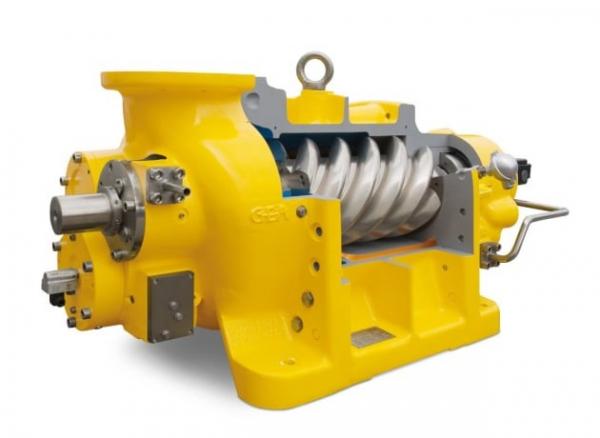
Lpg By-pass Valve
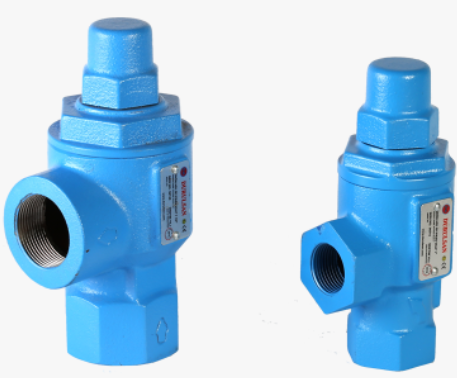
As pressure increases in the pressure line, the pumped fluid provides force to the inlet side of the by-pass valve. If the pressure rises above a certain valve, the by-pass spring is compressed by the fluid's force, and the by-pass is opened by entering the circuit. The fluid from the pressure line is returned to the tank via a by-pass. Fluid circulation is ensured throughout the project. The temperature of the pump and the flow will rise if this circulation continues for an extended period of time.
Lpg Bypass Valve - (Flanged)
As pressure develops in the pressure line, the pumped fluid exerts force on the inlet side of the by-pass valve. If the pressure rises above a certain valve, the by-pass spring is compressed, and the by-pass is opened by entering the circuit. The fluid is returned to the tank via a by-pass. This keeps the fluid moving during the installation. The temperature of the pump and the flow will rise if this circulation continues for a long time.

Gas Cylinder Filling Heads (F Valve)
The corrosion-resistant materials used in the DM Series filling heads include stainless steel, brass, aluminum, and specific polymers. The DM series Filling Heads have brass metal filling tips that are suited for ex-proof standards. Balanced calibration for easy filling operations suspension.For the DM series filling heads, impermeability material appropriate for LPG gas delivers many years of service.

Centrifugal Pumps
The most prevalent types of pumps used in the gas sector are centrifugal pumps. Centrifugal pumps employ centrifugal force, which is generated by the rotation of the pump impeller, to draw gas into the pump's intake and propel it through the discharge section. Kiakiagas will ensure that a discharge flow control valves that regulate the flow through the pump is procured for you to dispense gas at a time saving period. This will ensure that you meet demand at the right time without unnecessarily keeping your customer waiting. We will introduce you to the single-stage centrifugal pumps which are most commonly used to transport low-viscosity gases at high flow rates. These are usually part of a bigger pump network that includes horizontal multistage pump units for crude oil shipment or water injection pumps for secondary oil and gas recovery. To broaden your knowledge on this, a centrifugal pump, like most pumps, transforms rotational energy from a motor to energy in a moving fluid. A fraction of the energy is converted into fluid kinetic energy. Fluid enters axially through the casing's eye, is captured in the impeller blades, and is whirling tangentially and radially outward until it exits through the impeller's circumferential portions into the diffuser part of the casing. While going through the impeller, the fluid gains both velocity and pressure. The casing's doughnut-shaped diffuser, or scroll, section slows the flow and raises the pressure even more.
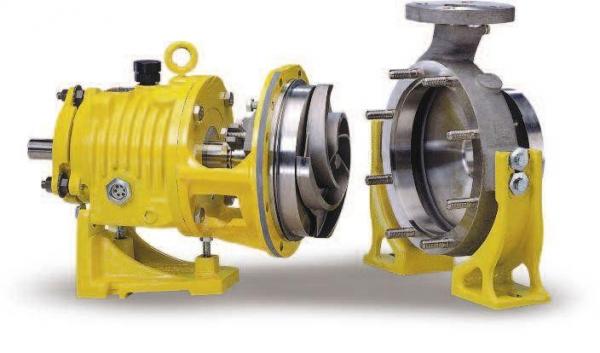
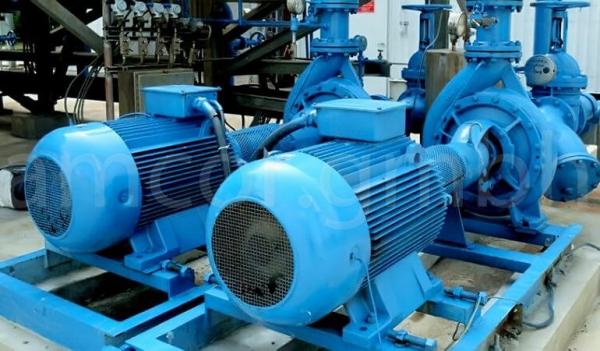
Reciprocating Plunger Pumps
In the gas business, plunger pumps are some of the most common industrial pumps. Plunger pumps pressurize gas in an enclosed cylinder to a pipe system using the reciprocating motion of plungers and pistons. Plunger pumps are known as constant flow pumps because the flow rate remains constant regardless of the system pressure at any given speed. A relief valve is an important feature of any plunger pump discharge pipe system because it prevents the pump and piping system from being over-pressurized. Due to the nature of the moving parts, plunger pumps require more frequent maintenance than centrifugal pumps. They also produce more noise than centrifugal pumps.
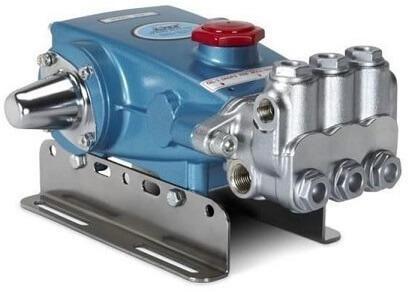
Delivery characteristics of the plunger pumps from our alliance members
● Operating Pressure: up to 3500 bar
● Flow rate: up to 4000 l/min (1056 gal/min)
● Temperature: up 200 °C (392 °F)
● Viscosity: up to 2000 mPas
● Inlet pressure/ Suction pressure: atmospheric up to 1000 bar
● pH-value: 6 - 9.5
● Solids: up to 80 % (max. 3.5 mm)
● API 674
● Ex Protection: Zone 2 & 1
Progressive Cavity Pumps

A progressive cavity pump, also known as an eccentric screw pump or cavity pump, is a form of positive displacement pump. It moves fluid by turning its rotor, which causes a series of small, fixed-shape, discrete chambers to move through the pump. In high viscosity applications, progressive cavity pumps are used. Progressive cavity pumps are also known as constant flow pumps because, whatever the system pressure, the flow rate remains practically constant at a given speed. Flow slippage is normal at higher pressures. A relief valve is an essential part of any progressive cavity pump discharge piping system to prevent over-pressuring of the pump and piping system. The rotor of the pump is constructed of steel that has been coated with a smooth hard surface, usually chromium, and the body (stator) is formed of moulded elastomer inside a metal tube body. The stator's elastomer core creates the requisite complicated cavities. The rotor is supported against the inside surface of the stator by angled link arms, which allow it to roll around the inside surface thanks to bearings (immersed in the fluid) (un-driven). For the stator, the elastomer is used to simplify the production of the complex interior shape, which is created by casting, and which also improves the quality and longevity of the seals by gradually swelling due to absorption of water and/or other common constituents of pumped fluids.

Diaphragm pumps
Diaphragm pumps, which use a valve and a diaphragm to transport fluid, are one of the most versatile types of oil and gas pumps on the market. The theory behind this pump is that in a vacuum, a decrease in volume generates an increase in pressure, and vice versa. In oil refineries, diaphragm pumps are ideal for high-volume fluid transfer activities. Because they have fewer moving parts and less friction during operation, they require less maintenance than positive displacement pumps and are available in compact designs. On the negative, diaphragm pumps are prone to 'winks,' which are low-pressure states within the system that cause pumping operations to slow down. Fortunately, a back-pressure regulator may be used to correct winks. They are also unsuitable for continuous or long-distance pumping operations because they do not meet the needed high-pressure conditions. Diaphragm pumps are well-known for their ability to transport high-viscosity, medium-viscosity, and low-viscosity liquids, as well as liquids with high solids content. To handle a variety of severe chemicals, such as acids, this pump can be built from various body materials and membranes.
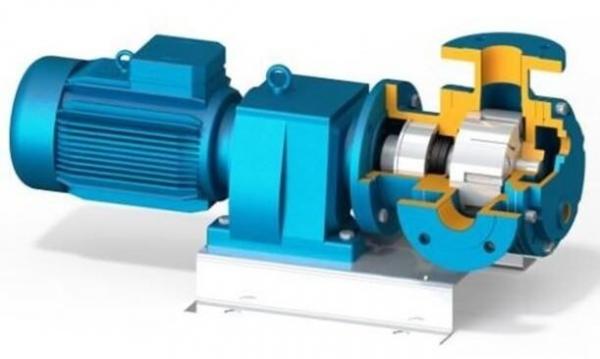
Gear Pumps
A gear pump pumps fluid through displacement by meshing gears. One of the most frequent forms of positive displacement pumps for transporting industrial fluids is the gear pump. Chemical transfer applications for high viscosity fluids are also commonplace using gear pumps. External gear pumps use two external spur gears, and timing gears drive the internal gear set. Because the internal gears do not touch, external gear pumps can be used to pump non-lubricating fluids. The internal mating gear is driven by a shaft driven driving gear in internal gear pumps. The internal mating gear in internal gear pumps is driven by a shaft-driven drive gear. Gear pumps are positive displacement (or fixed displacement), meaning they pump a constant amount of fluid for each revolution. Since the pumped fluid passes between the close gear tolerances, gear pumps are normally used for clean fluids. A relief valve is an essential component in the discharge piping system to protect the pump and piping from over pressurizing.

Metering pumps
A metering pump transports a specific amount of liquid in a predetermined amount of time, resulting in an accurate flow rate. Metering is the delivery of fluids at exact, controllable flow rates. The phrase "metering pump" refers to the application or function of the pump rather than the specific type of pump. Simplex reciprocating pumps with a packed plunger or diaphragm liquid end make up the majority of metering pumps. Because the pumped fluid is sealed inside the diaphragm, the liquid end of the diaphragm is preferred. There are no leaks of pumped liquid into the atmosphere. Oscillating displacement pumps make up the majority of metering pumps. On the reciprocal stroke, a precisely determined volume of liquid is sucked into the displacement body, and on the compression stroke, it is driven into the dosing line. The pump settings can be changed to achieve consistently accurate metering. The accurate control of the pumps is made possible by microprocessor technology. Sophisticated monitoring functions ensure operational reliability and guarantee minimal chemical consumption yet optimum disinfection. Interfaces integrate the pumps into a fully automated process.

Untimely changing of gas pumps and dispense equipment may be dissatisfying and piss you off of the gas pumps and dispense equipment. This is factual when you are not yet opportune to procure the gas pumps and dispense equipment from Kiakiagas, a gas pumps and dispense Equipment Company that is affiliated with the gas pumps and dispense equipment manufacturers. Among the affiliated American company is the Casper and others. When you choose Kiakiagas'convenience store services for gas plant equipment, you can stay compliant and up to date with a gas plant equipment regulation. We assist you to outfit your location with the gas pumps, dispensing equipment, and hardware necessary to stay in compliance with a gas pump and dispense equipment regulations. We are obsessed with quality. First and foremost, we procure our commercial gas pumps and dispense equipment for high volume applications from affiliated European and American companies and our gas pumps and dispense equipment for high volume applications design is in accordance with European standards. Second, the main directives are ATEX and MID. Our ISO9001 quality system allows us to keep track of all stages of production. Finally, European Notified Bodies have certified all fuel dispenser models. Fuel dispensers are made with high-quality materials. They also come with four-piston meters with extremely high pressures. Our team has been trained to ensure that installations are made with the most up-to-date technologies. We can also help you obtain the necessary permits and ensure that all gas pumps and dispense systems are thoroughly certified and tested. Kiakiagas is a one-stop-shop for all things gas, from pipeline to pump. As an added bonus for convenience stores, Kiakiagas carries leading gas pump and dispense equipment manufacturers such as Casper.
Kiakiagas Limited is a leading Gas business in Lagos, Nigeria with expertise in commercial gas pump and dispenses equipment, LPG retailing, New Gas Market development, Building of Gas Plants and Gas strategy advisory. Supply by Kiakiagas provides LPG products and equipment for corporate and institutional clients for the project and operational needs. If you need a partner with hands-on local expertise in the Nigerian Gas space or any of our bespoke solutions/services, kindly Mail hello@Kiakiagas.com to learn more.to learn more.
















